Dark matter satellites trigger massive birth of stars
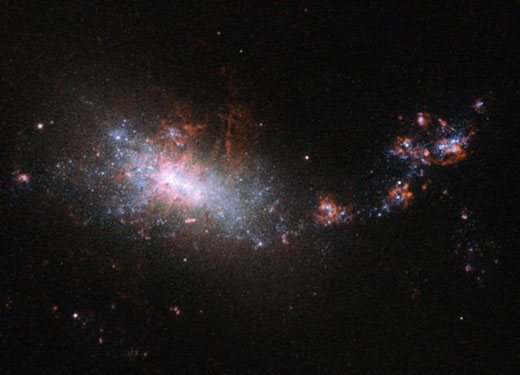 Astronomers use computer simulations based on theoretical models to explain massive star formation observed in dwarf galaxies.
Astronomers use computer simulations based on theoretical models to explain massive star formation observed in dwarf galaxies.
Mar 10th, 2016
Read more
 Subscribe to our Space Exploration News feed
Subscribe to our Space Exploration News feed
 Astronomers use computer simulations based on theoretical models to explain massive star formation observed in dwarf galaxies.
Astronomers use computer simulations based on theoretical models to explain massive star formation observed in dwarf galaxies.
Mar 10th, 2016
Read more It appears that radio-wave measurements have discovered a new component of the Galactic cosmic ray population.
It appears that radio-wave measurements have discovered a new component of the Galactic cosmic ray population.
Mar 4th, 2016
Read more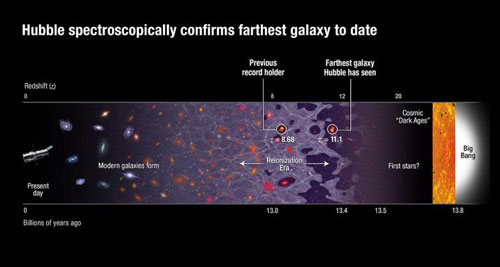 By pushing NASA's Hubble Space Telescope to its limits, an international team of astronomers has shattered the cosmic distance record by measuring the farthest galaxy ever seen in the universe. This surprisingly bright infant galaxy, named GN-z11, is seen as it was 13.4 billion years in the past, just 400 million years after the Big Bang.
By pushing NASA's Hubble Space Telescope to its limits, an international team of astronomers has shattered the cosmic distance record by measuring the farthest galaxy ever seen in the universe. This surprisingly bright infant galaxy, named GN-z11, is seen as it was 13.4 billion years in the past, just 400 million years after the Big Bang.
Mar 3rd, 2016
Read more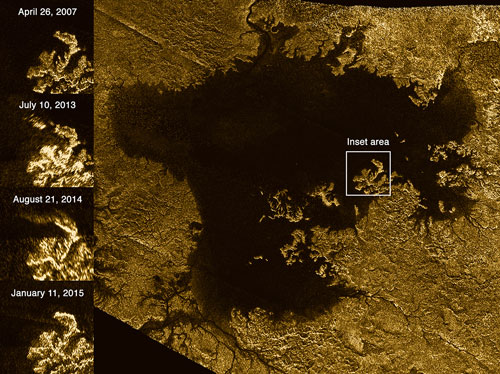 In the shadow of Saturn's hulking planetary mass, Titan's liquid hydrocarbon seas seem a bit choppy, astronomers say.
In the shadow of Saturn's hulking planetary mass, Titan's liquid hydrocarbon seas seem a bit choppy, astronomers say.
Mar 2nd, 2016
Read more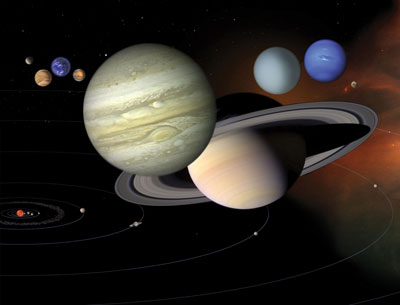 Volumes under internal tension crack hierarchically, revealing how gravity created the universe's wide variety of body sizes.
Volumes under internal tension crack hierarchically, revealing how gravity created the universe's wide variety of body sizes.
Mar 2nd, 2016
Read moreResearchers find that a universe that contains some big objects and many small objects relieves gravitational tension faster than a uniform universe.
Mar 1st, 2016
Read more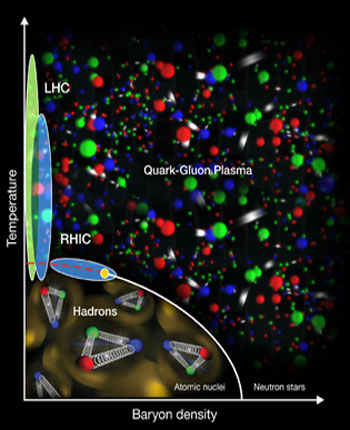 An in-depth look at the origins of matter and the environmental conditions that helped shape the universe today.
An in-depth look at the origins of matter and the environmental conditions that helped shape the universe today.
Mar 1st, 2016
Read more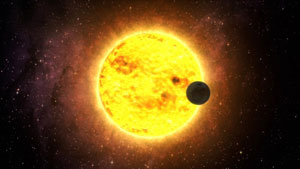 Researchers say the best chance for finding a signal from beyond Earth is to presume extraterrestrial observers are using the same methods to search for us that we are using to search for life beyond Earth.
Researchers say the best chance for finding a signal from beyond Earth is to presume extraterrestrial observers are using the same methods to search for us that we are using to search for life beyond Earth.
Mar 1st, 2016
Read more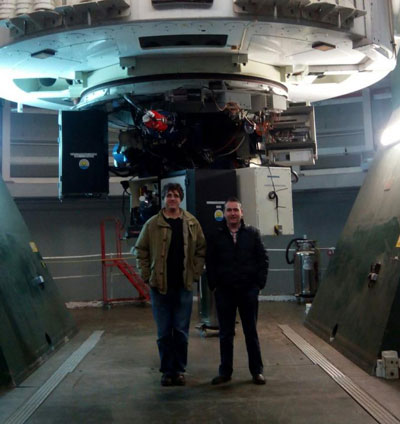 A team of researchers has accurately detected a structure in the innermost region of a quasar (small, very far objects that emit huge amounts of energy, comparable to that emitted by a whole galaxy) at a distance of more than five billion light-years from Earth.
A team of researchers has accurately detected a structure in the innermost region of a quasar (small, very far objects that emit huge amounts of energy, comparable to that emitted by a whole galaxy) at a distance of more than five billion light-years from Earth.
Feb 25th, 2016
Read more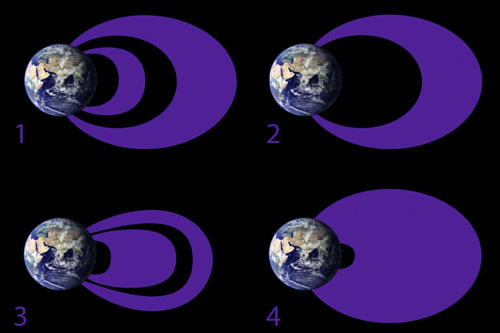 The shape of the two electron swarms 600 miles to more than 25,000 miles from the Earth's surface, known as the Van Allen Belts, could be quite different than has been believed for decades, according to a new study of data from NASA's Van Allen Probes.
The shape of the two electron swarms 600 miles to more than 25,000 miles from the Earth's surface, known as the Van Allen Belts, could be quite different than has been believed for decades, according to a new study of data from NASA's Van Allen Probes.
Feb 24th, 2016
Read more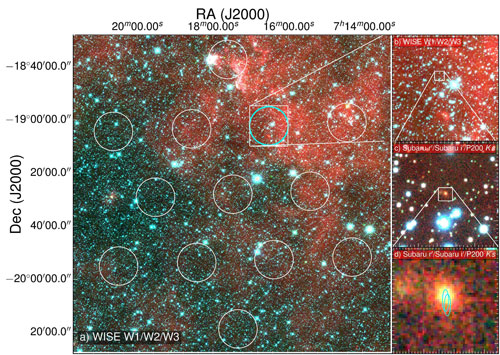 Researchers used a combination of radio and optical telescopes to identify the precise location of a fast radio burst in a distant galaxy, allowing them to conduct a unique census of the Universe's matter content.
Researchers used a combination of radio and optical telescopes to identify the precise location of a fast radio burst in a distant galaxy, allowing them to conduct a unique census of the Universe's matter content.
Feb 24th, 2016
Read more A spectacular image of the Milky Way has been released to mark the completion of the APEX Telescope Large Area Survey of the Galaxy (ATLASGAL). The APEX telescope has mapped the full area of the Galactic Plane visible from the southern hemisphere for the first time at submillimeter wavelengths and in finer detail than space-based surveys.
A spectacular image of the Milky Way has been released to mark the completion of the APEX Telescope Large Area Survey of the Galaxy (ATLASGAL). The APEX telescope has mapped the full area of the Galactic Plane visible from the southern hemisphere for the first time at submillimeter wavelengths and in finer detail than space-based surveys.
Feb 24th, 2016
Read more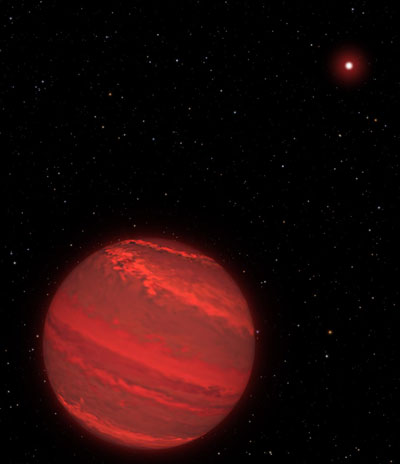 Astronomers using NASA's Hubble Space Telescope have measured the rotation rate of an extreme exoplanet by observing the varied brightness in its atmosphere. This is the first measurement of the rotation of a massive exoplanet using direct imaging.
Astronomers using NASA's Hubble Space Telescope have measured the rotation rate of an extreme exoplanet by observing the varied brightness in its atmosphere. This is the first measurement of the rotation of a massive exoplanet using direct imaging.
Feb 18th, 2016
Read moreResearchers have shown how a bizarrely shaped black hole could cause Einstein's general theory of relativity, a foundation of modern physics, to break down. However, such an object could only exist in a universe with five or more dimensions.
Feb 18th, 2016
Read more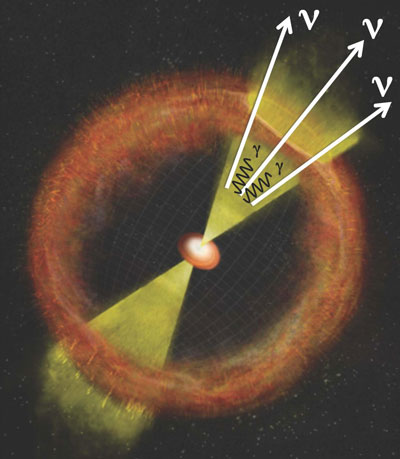 The sources of the high-energy cosmic neutrinos that are detected by the IceCube Neutrino Observatory buried in the Antarctic ice may be hidden from observations of high-energy gamma rays, new research reveals. These high-energy cosmic neutrinos, which are likely to come from beyond our Milky Way Galaxy, may originate in incredibly dense and powerful objects in space that prevent the escape of the high-energy gamma rays that accompany the production of neutrinos.
The sources of the high-energy cosmic neutrinos that are detected by the IceCube Neutrino Observatory buried in the Antarctic ice may be hidden from observations of high-energy gamma rays, new research reveals. These high-energy cosmic neutrinos, which are likely to come from beyond our Milky Way Galaxy, may originate in incredibly dense and powerful objects in space that prevent the escape of the high-energy gamma rays that accompany the production of neutrinos.
Feb 18th, 2016
Read more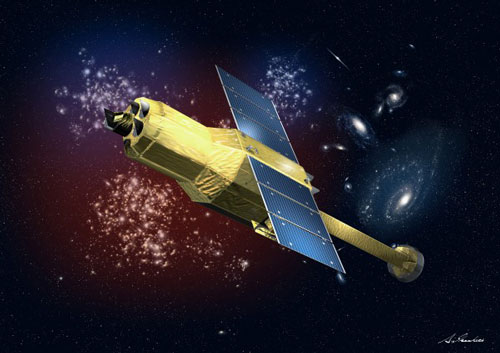 The ASTRO-H X-ray space telescope mission is being launched in Japan this week.
The ASTRO-H X-ray space telescope mission is being launched in Japan this week.
Feb 12th, 2016
Read more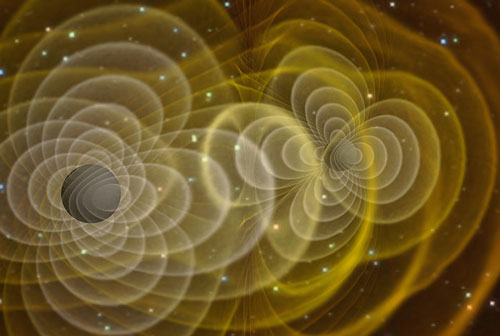 Gravitational waves were predicted by Einstein's theory of general relativity in 1916, and now, almost exactly 100 years later, the faint ripples across space-time have been found. The advanced Laser Interferometric Gravitational-wave Observatory (aLIGO) has achieved the first direct measurement.
Gravitational waves were predicted by Einstein's theory of general relativity in 1916, and now, almost exactly 100 years later, the faint ripples across space-time have been found. The advanced Laser Interferometric Gravitational-wave Observatory (aLIGO) has achieved the first direct measurement.
Feb 11th, 2016
Read more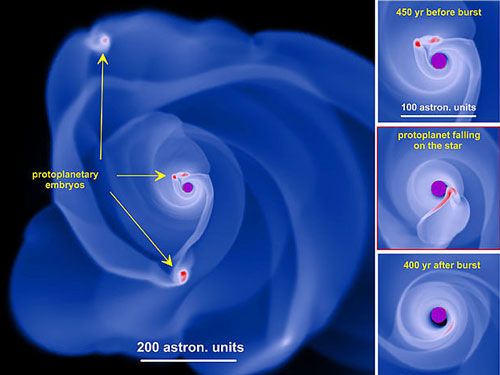 Astronomers discovered stars may not accumulate their final mass steadily, as was previously thought, but in a series of violent events manifesting themselves as sharp stellar brightening. The young FU Orionis star in the constellation of Orion is the prototype example, which showed an increase in brightness by a factor of 250 over a time period of just one year, staying in this high-luminosity state now for almost a century.
Astronomers discovered stars may not accumulate their final mass steadily, as was previously thought, but in a series of violent events manifesting themselves as sharp stellar brightening. The young FU Orionis star in the constellation of Orion is the prototype example, which showed an increase in brightness by a factor of 250 over a time period of just one year, staying in this high-luminosity state now for almost a century.
Feb 8th, 2016
Read more